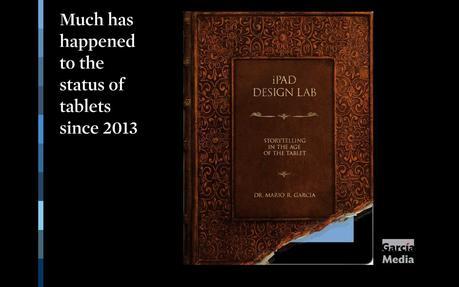
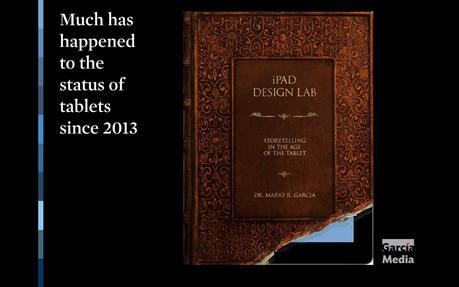
When the WAN IFRA execs asked me to speak for a second consecutive year at their Tablet Summit, this time in Amsterdam, it allowed me to take stock of the state of tablet publishing in late 2014, more than four years since the first iPad made its entrance into a media world that welcomed it with open arms, although not very sure strategies of how to utilize it to its fullest potential.
I remember organizing a The Power of the Tablet Conference at Poynter as soon as those first iPads landed in our hands. I also remember all those long days and nights when I set up a laboratory, the so called iPad Lab, to analyze the tablet and how we used it. It was a combination of these two events that led to my first digital book: The iPad Design Lab: Storytelling in the Age of the Tablet (2013).
In addition, we were involved with the Poynter Tablet EyeTrack Research, the first to offer us some specific data as to how tablet users consumed news and information on their iPads.
What has changed for tablet editions?
These are centerpieces of my presentation today on the subject:
The major changes for the tablet have taken place in three interrelated areas of frequency, a shift in the role of tablets within the media quartet and the fact that tablets are now both lean forward and lean back platforms.
One can no longer discuss the tablet for news consumption without also mentioning smarphones: both of these platforms are part of how users consume information via mobile devices. They are inseparable as storyteller devices and in the preference of users.
I have also concluded the following, which I will explain in detail during my presentation--
Look & Feel--Gone is the exaggerated use of bells and whistles. You still must keep the finger happy, but without overwhelming it.
Not for nighttime only anymore--The one platform in the media quartet that affords users a lean forward and a lean back experience.
The ones doing right--I mention examples from Berlingske (Denmark) and The Ottawa Citizen (Canada) as tablet editions that seem to have kept up with the changing role of tablets. In both cases, these newspapers produce successful evening tablet editions.
What's new? --At The Washington Post: For the past few months, a group inside the Post has been working on a new application that will offer a curated selection of news and photographs from the daily newspaper in a magazine-style, tablet-friendly format. The application will come preinstalled on Amazon’s newly updated Kindle Fire tablet, expected to be launched later this fall with the larger 8.9-inch screen.
At the end of our 2010 The Power of the Tablet Conference at Poynter , which was, by the way, the first ever tablet conference, I summarized my presentation with this statement, which is even truer today:
Keys to early success: make it local, personal, needed, exclusive and simple, and don’t be afraid to experiment.
I may add: You don't have to include every story you have running online or in your print edition for your curated tablet edition. Look for those stories that have the greatest tablet use potential. The readers appreciate the effort, even if it is only five stories; the news team will see a tablet edition as a realistic possibility.
Tablet editions that get it right
Berlingske (Denmark)
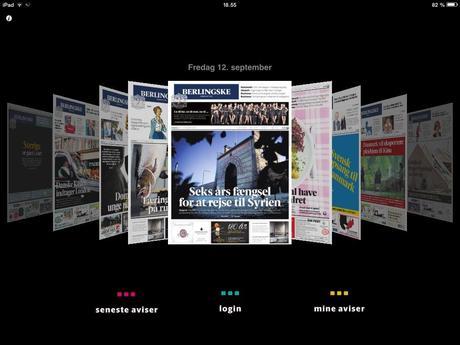
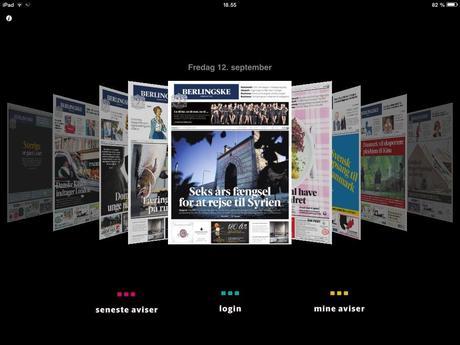
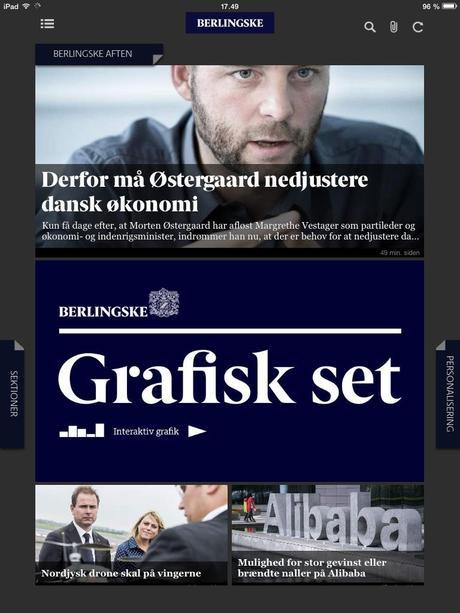
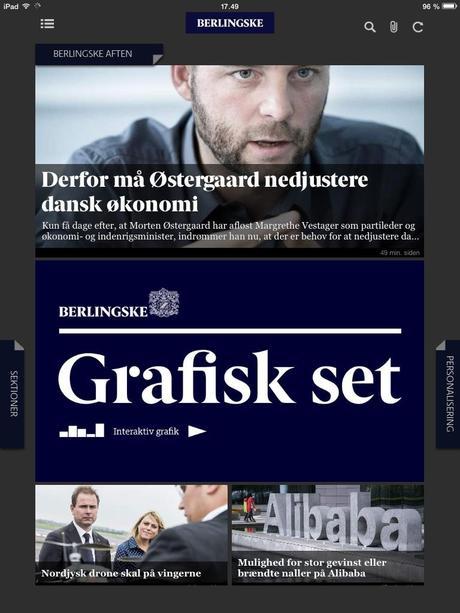
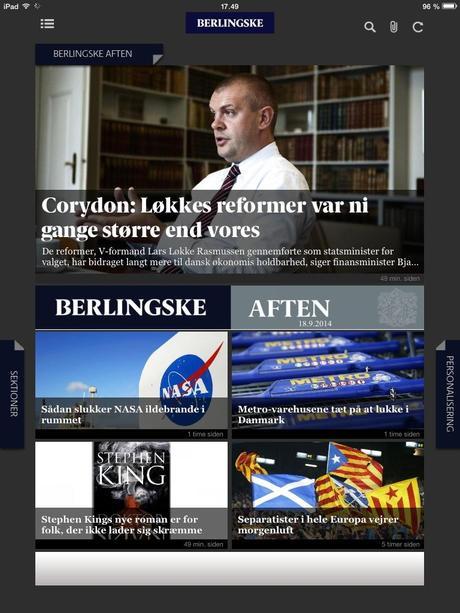

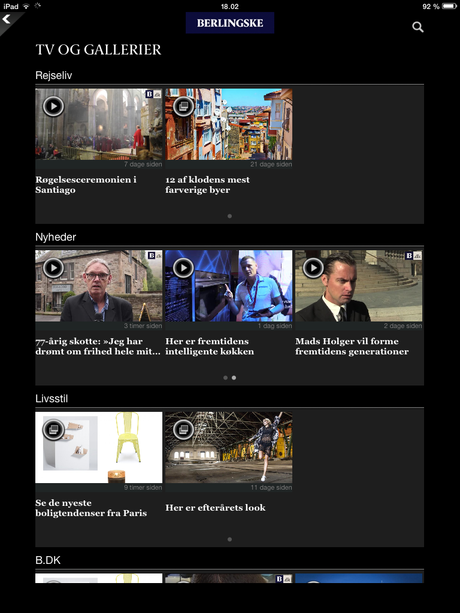
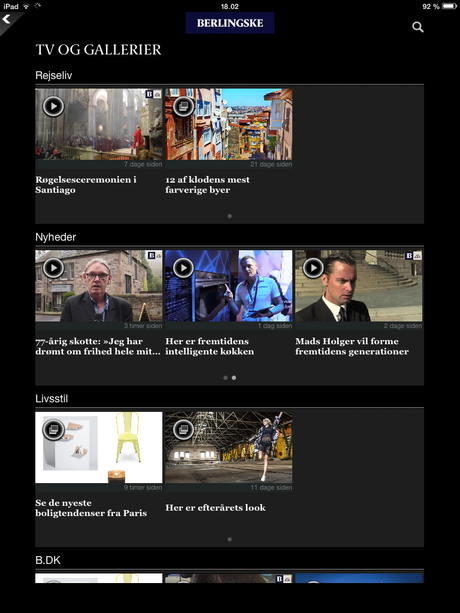
The Ottawa Citizen (Canada)








All about the WAN IFRA 7th Tablet and App Summit
http://www.wan-ifra.org/events/7th-tablet-and-app-summit
Follow the Summit via Twitter:
7th Tablet and App Summit
http://wan-ifra.org/node/103540
The World Publishing Expo, taking place in Amsterdam this week, is the largest global trade exhibition for the news publishing and news media industries. More than 8,000 visitors, 250 exhibitors and 100 speakers are gathered in Amsterdam for the event.
Newspaper industry facts from WAN IFRA
Every year, during the annual WAN IFRA Publishing Expo, the organization presents the latest figures about our industry.
Here are highlights from this year's report
- More than half the world's adult population reads a daily newspaper -- 2.5 billion people -- and more than 800 million in digital form.-- The newspaper industry generates more than US$160 billion of revenue globally from content sales, advertising revenues and increasingly other forms of diversified revenue streams.
-- Though digital audience and revenues are growing substantially, 93 per cent of newspaper company revenues globally continue to come from print.
WAN-IFRA collects data for more than 70 countries, which represent more than 90 percent of the global industry base, thanks to the positive support of national newspaper and media associations and other contributors.
For more about the WAN IFRA Trends Report:
http://www.wan-ifra.org/microsites/world-press-trends
In the Good News Department
Newsweek announces it’s profitable
http://www.capitalnewyork.com/article/media/2014/10/8554160/emnewsweekem-announces-its-profitable?utm_source=API%27s+Need+to+Know+newsletter&utm_campaign=b9094406d8-Need_to_Know_October_9_201410_9_2014&utm_medium=email&utm_term=0_e3bf78af04-b9094406d8-31701869
Highlight:
Taken at face value, the development marks the first time Newsweek is in the black in years.
The Washington Post to power technology at the University of Maryland, Columbia University student newspapers
Highlight
The Washington Post today announces it will provide software and technology to the student newspapers at the University of Maryland (The Diamondback) and Columbia University (The Columbia Daily Spectator), giving them access to the same advanced digital tools and technology that The Post’s newsroom uses every day.
The student publications will have access to specialized story templates, including The Post’s full-page enterprise template which can be used to create rich multimedia stories like “Reimagining Union Station” and “Stop and Seize”.

